Limit Climate

Are current climate targets enough to prevent dangerous climate change ?
The Paris Agreement set a global goal to limit warming to below 2°C and pursue efforts to limit it to 1.5°C. Countries submitted Nationally Determined Contributions (NDCs) outlining their plans to reduce emissions. However, there is a significant gap between the emissions reductions implied by current NDCs and the level required to meet the 1.5°C target. Many NDCs focus on short-term goals without clear pathways to achieve long-term decarbonization. While adaptation measures are crucial, they cannot replace the urgent need for mitigation efforts. To strengthen climate action, countries should revise and strengthen their NDCs to align with the 1.5°C target, invest in renewable energy and energy efficiency, develop robust adaptation strategies, and foster international collaboration on technology transfer and finance mechanisms. More ambitious goals, combined with concrete actions at the national and international levels, are necessary to keep global temperature rise within safe limits. The urgency of the situation demands a concerted effort from all sectors of society to transition towards a sustainable future.
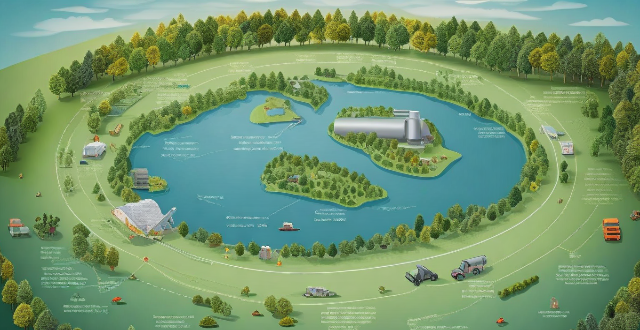
Are current climate commitments enough to limit global warming to 1.5°C ?
The Paris Agreement aims to limit global warming to 1.5°C, but current climate commitments are insufficient. Nationally Determined Contributions (NDCs) show progress in renewable energy, energy efficiency, and forest protection, but lack ambition, consistent tracking, and long-term strategies. International cooperation has positive steps like the Green Climate Fund and technology transfer, but faces challenges with insufficient funding and unequal responsibility. Mitigation successes include carbon pricing and clean transportation, while adaptation needs focus on community resilience and natural infrastructure. To achieve the 1.5°C goal, urgent action is required in enhancing NDCs, rapid energy transition, advanced technologies, and setting long-term commitments beyond 2030 towards net-zero emissions by 2050 or sooner.

How does the Paris Climate Agreement address climate justice ?
The Paris Climate Agreement, adopted in 2015, emphasizes climate justice and the need for all countries to take action to limit global warming. It recognizes the unequal impacts of climate change on vulnerable communities and developing countries, and provides mechanisms for financial support, capacity building, and loss and damage compensation. The agreement aims to create a more equitable and just response to the global challenge of climate change.

What is the significance of updating and strengthening national climate commitments ?
The significance of updating and strengthening national climate commitments lies in mitigating the adverse effects of climate change, building resilience against its impacts, creating economic opportunities through a green economy, improving social welfare and health, and demonstrating political leadership for global cooperation. By doing so, countries can move closer to achieving the long-term goals set by the Paris Agreement and secure a sustainable future for all.
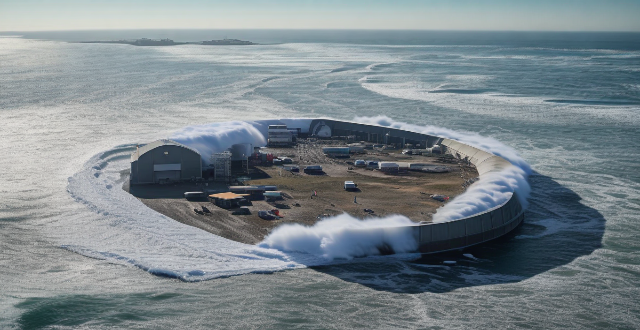
What is a climate refugee ?
Climate refugees are individuals who must relocate due to environmental changes from climate change, such as sea-level rise and extreme weather events. This displacement affects social structures, economies, and cultures, and there is a need for international cooperation and sustainable practices to address the issue. There is currently no specific legal status for climate refugees under international law.

Is there an age limit for buying travel insurance ?
Is there an age limit for buying travel insurance? Most providers do not impose any restrictions based on age, but some policies may have specific requirements or limitations regarding age. When purchasing travel insurance, consider factors such as coverage options, pre-existing medical conditions, adventure sports coverage, cost, and reputation.

What are the implications of ignoring the views of climate skeptics on climate policy ?
Ignoring climate skeptics' views can lead to lack of diversity in thought, potential for misinformation, loss of public trust, opportunity costs, and polarization. Policymakers should consider diverse perspectives and engage with all stakeholders for effective solutions.

What are the benefits of climate financing ?
Climate financing is crucial for mitigating climate change and adapting to its impacts. It supports projects that reduce GHG emissions and build resilience, stimulates economic growth through green investments, attracts private sector involvement, promotes international cooperation, helps achieve global climate goals, encourages innovation, builds resilience, contributes to SDGs, enhances policy coherence, and addresses environmental justice.
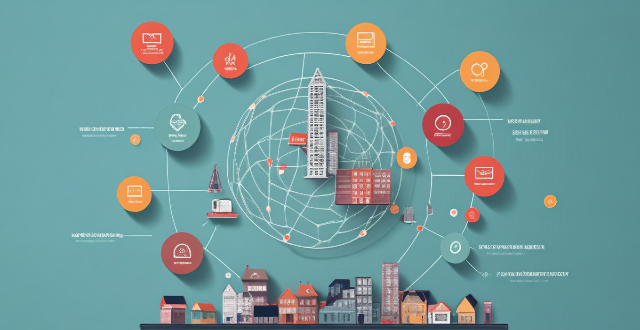
What is the significance of climate finance in achieving the goals of global climate governance ?
Climate finance is vital for achieving global climate governance goals, supporting mitigation, adaptation, sustainable development, innovation, cooperation, transparency, policy integration, capacity building, and private sector engagement.

How do climate summits contribute to global efforts to combat climate change ?
Climate summits play a crucial role in the global fight against climate change by setting targets and goals, encouraging international cooperation, promoting policy and technological innovation, raising awareness and mobilizing action, and financing climate action.

What are the challenges faced by women in adapting to climate change ?
Women face unique challenges in adapting to climate change related to their roles as caregivers, farmers, and community members, limited access to resources and decision-making power. Key challenges include limited access to education, financial resources, land and property rights; caregiving responsibilities such as water collection and childcare; limited participation in decision-making processes due to political underrepresentation and cultural norms; and impacts on livelihoods through changes in agriculture, income generation, and migration. Addressing these challenges requires a gender-sensitive approach to climate change adaptation that provides education, improves access to resources, and supports women's roles.

What role do governments play in implementing climate policies ?
Governments play a pivotal role in implementing climate policies by setting regulations, offering financial incentives, raising public awareness, cooperating internationally, and planning infrastructure to combat climate change.

How do international agreements such as the Paris Agreement promote climate action ?
The Paris Agreement is a global climate agreement that aims to limit global warming to well below 2 degrees Celsius above pre-industrial levels and pursue efforts to limit the temperature increase to 1.5 degrees Celsius, adopted by 196 parties at COP 21 in Paris on 12 December 2015 and entered into force on 4 November 2016, representing a significant step forward in global efforts to address climate change, promoting climate action by setting clear goals, requiring nationally determined contributions, establishing transparency and accountability mechanisms, providing financial and technical support to developing countries, and facilitating global cooperation through the global stocktake and other means.

What is the Paris Agreement and how does it contribute to global climate governance ?
The Paris Agreement, adopted in 2015, is a landmark global climate change agreement aimed at limiting global warming to below 2°C and pursuing efforts to limit it to 1.5°C above pre-industrial levels. It contributes significantly to global climate governance by establishing mechanisms such as Nationally Determined Contributions (NDCs), enhancing transparency and accountability, providing finance and capacity building, addressing loss and damage, conducting global stocktakes, and setting long-term goals. These measures help track progress, hold countries accountable for their commitments, support vulnerable nations, assess collective progress, and encourage more aggressive action towards mitigating climate change.

What are the factors that contribute to climate vulnerability ?
Climate vulnerability is influenced by various factors that can exacerbate the impacts of climate change and limit the ability of systems to adapt, including exposure to extreme weather events and sea level rise, ecosystem sensitivity, economic resources, infrastructure resilience, population density, dependency on climate-sensitive sectors, policy frameworks, access to information and technology, traditional knowledge, awareness and education, biodiversity loss, and land use changes. Addressing these factors through comprehensive strategies is essential for building resilience against the challenges posed by a changing climate.

What is the Paris Agreement and how does it impact climate policies worldwide ?
The Paris Agreement is a global climate change agreement adopted by 196 parties at the United Nations Framework Convention on Climate Change (UNFCCC) Conference of the Parties (COP) in Paris on December 12, 2015. The main goal of the Paris Agreement is to limit global warming to well below 2 degrees Celsius above pre-industrial levels and pursue efforts to limit the temperature increase to 1.5 degrees Celsius. The Paris Agreement impacts climate policies worldwide by promoting global cooperation among nations to address climate change, requiring each country to submit a nationally determined contribution (NDC) outlining its own targets for reducing greenhouse gas emissions and adapting to the impacts of climate change, including a robust transparency framework to ensure that countries are meeting their commitments, committing developed countries to providing financial and technical support to developing countries, establishing a mechanism to address loss and damage associated with the adverse effects of climate change, and encouraging implementation and compliance through peer review and multilateral assessments.

How can governments use climate risk assessments to develop effective policies ?
Climate risk assessments help governments devise policies that address climate change by identifying vulnerabilities, prioritizing actions, developing targeted strategies, integrating sectors, engaging stakeholders, monitoring progress, and maintaining flexibility.

What actions have countries taken to meet their climate commitments ?
Countries have made commitments to reduce their carbon emissions and mitigate the impacts of climate change. They have taken various actions, including investing in renewable energy sources, improving energy efficiency, implementing carbon pricing mechanisms, focusing on forestry and land use practices, and promoting international cooperation. These efforts demonstrate a collective determination to address the urgent issue of climate change and create a more sustainable future for all.
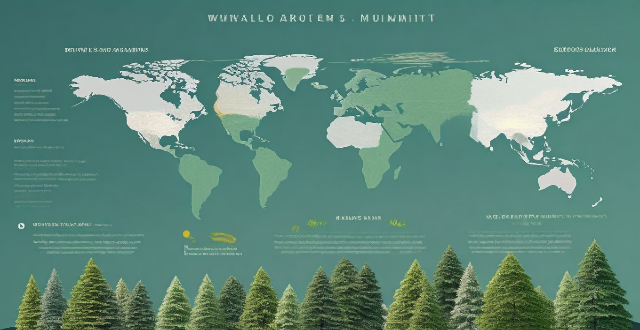
When and where was the last major climate summit held ?
The last major climate summit, COP26, was held in Glasgow, Scotland from October 31 to November 12, 2021. The conference aimed to review progress made since the Paris Agreement and strengthen the global response to climate change. Several significant outcomes were achieved, including pledges to cut emissions, finance for climate action, preservation of forests as carbon sinks, reduction of methane emissions, establishment of a loss and damage fund, emphasis on adaptation and resilience, youth and civil society engagement, just energy transition, plans for future meetings, and an initial global stocktake. However, many believe that the commitments made are still not enough to limit global warming to well below 2 degrees Celsius or achieve the more ambitious goal of 1.5 degrees Celsius.

How does the Paris Climate Agreement aim to reduce global warming ?
The Paris Climate Agreement, adopted in 2015, is a global pact with the primary objective of limiting global warming to below 2°C and pursuing efforts to limit it further to 1.5°C above pre-industrial levels. This summary explores key aspects of the agreement: 1. **Long-term Temperature Goals** emphasize holding the increase in global average temperature well below 2°C and pursuing efforts for 1.5°C. 2. **Nationally Determined Contributions (NDCs)** require each country to set voluntary targets on greenhouse gas emissions and climate change plans. 3. **Enhanced Transparency and Accountability** introduce a system for monitoring compliance through regular reporting. 4. **Finance and Capacity Building** involve developed countries providing financial assistance and capacity building to developing nations. 5. **Loss and Damage** address inevitable impacts of climate change by creating a mechanism for dealing with associated losses. 6. **Global Stocktake** is a periodic review process to assess global progress toward meeting the agreement's goals. 7. **Cooperation and Implementation** highlight the importance of international collaboration for effective implementation of the agreement. These components work together to create a comprehensive approach aimed at mitigating the effects of climate change and adapting to its impacts.

What is the Paris Agreement and how does it address climate change ?
The Paris Agreement is a global climate change agreement adopted by 196 parties at the United Nations Framework Convention on Climate Change (UNFCCC) Conference of the Parties (COP 21) in Paris, France, on December 12, 2015. It aims to limit global warming to well below 2 degrees Celsius above pre-industrial levels and pursue efforts to limit the temperature increase to 1.5 degrees Celsius. The agreement also seeks to strengthen the ability of countries to deal with the impacts of climate change. To achieve its goals, the Paris Agreement addresses climate change through mitigation, adaptation, finance, and transparency and accountability measures. Mitigation refers to actions taken to reduce or avoid greenhouse gas emissions, such as increasing renewable energy use, improving energy efficiency, preserving forests, and implementing carbon pricing policies. Adaptation involves adjustments in natural or human systems in response to actual or expected climate stimuli or their effects, such as infrastructure development, water management, health systems, and agriculture practices. Finance acknowledges the need for financial support from developed countries to help developing countries implement their climate actions through mechanisms like the Green Climate Fund and international cooperation. Transparency and accountability are ensured through regular reporting on national determined contributions (NDCs), a global stocktake process every five years, and an expert review process to assess the quality and accuracy of countries' reports on their greenhouse gas emissions and implementation of their NDCs.

What is the Paris Agreement and its impact on climate governance ?
The Paris Agreement, adopted in 2015, aims to limit global warming and represents a unified effort by countries worldwide to address climate change. Key features include long-term goals, nationally determined contributions (NDCs), adaptation measures, loss and damage mechanisms, financial support, and transparency frameworks. The agreement has impacted climate governance by promoting global cooperation, enhancing political commitment, providing flexibility in NDCs, establishing financial mechanisms, ensuring transparency, recognizing loss and damage, integrating policies, involving the private sector, and raising public awareness. Despite implementation challenges, the Paris Agreement has set the stage for concerted action on climate change.

What actions are being taken globally to address the climate emergency ?
The climate emergency is a pressing issue caused by human activities leading to global warming. International agreements like the Paris Agreement aim to limit global warming, and many countries have implemented national policies such as carbon pricing and renewable energy mandates. Corporations are also taking actions to reduce emissions and invest in clean energy. Addressing the climate emergency requires a global effort from all levels of society.

What are the limitations of current climate models ?
This article discusses the limitations of current climate models, which are essential tools for predicting future climate conditions and understanding the impacts of human activities on the environment. The main limitations include uncertainty in model inputs, limited spatial resolution, simplified physics and processes, computational constraints, and challenges associated with model intercomparison projects. Addressing these challenges will be crucial for improving our ability to predict future climate conditions and assess potential impacts on ecosystems and human societies.

How do climate change negotiations influence national environmental policies ?
The influence of climate change negotiations on national environmental policies is significant, as they set international targets and promote technology transfer, financial support mechanisms, adaptation measures, stronger legal frameworks, and public awareness. These discussions help countries develop comprehensive policies that integrate climate considerations across various sectors, ensuring policy coherence and effective action towards global climate goals.

What significant agreements or treaties have been signed at climate summits ?
Over the years, several significant agreements and treaties have been signed at climate summits. Here are some of the most notable ones: 1. The United Nations Framework Convention on Climate Change (UNFCCC) was adopted in 1992 at the Earth Summit in Rio de Janeiro, Brazil. It is a framework for international action to combat climate change and its adverse effects. 2. The Kyoto Protocol was adopted in 1997 at the Third Conference of the Parties (COP3) in Kyoto, Japan. It is an international treaty that sets binding obligations on industrialized countries to reduce their greenhouse gas emissions. 3. The Paris Agreement was adopted in 2015 at the Twenty-First Conference of the Parties (COP21) in Paris, France. It is a globally binding agreement aimed at limiting global warming to well below 2 degrees Celsius above pre-industrial levels and pursuing efforts to limit the temperature increase to 1.5 degrees Celsius. 4. The Glasgow Climate Pact was adopted in 2021 at the Twenty-Sixth Conference of the Parties (COP26) in Glasgow, Scotland. It is a compromise agreement that aims to keep alive the goal of limiting global warming to 1.5 degrees Celsius while recognizing the need for further efforts to reduce emissions.

What are the key provisions of the Paris Agreement on climate change ?
The Paris Agreement on Climate Change is a global response to climate change adopted in 2015. Key provisions include limiting global warming below 2 degrees Celsius, pursuing efforts toward 1.5 degrees, nationally determined contributions, transparency and accountability measures, financial support for developing countries, addressing loss and damage from climate impacts, enhanced capacity building, and regular global stocktakes. The agreement stresses the importance of implementation and support, with developed countries taking the lead. Its success relies on international cooperation and continuous efforts to combat climate change.

What is the Paris Agreement and how has it impacted international climate change negotiations ?
The Paris Agreement, adopted in 2015, is a significant milestone in the global fight against climate change. It has achieved near-universal participation with 196 parties signing onto the agreement, demonstrating a strong consensus on the need to address this issue. The agreement sets long-term goals to limit global warming and strengthen countries' ability to deal with its impacts. Key aspects of the Paris Agreement's impact on international climate negotiations include: 1. **Universal Participation**: Achieving near-universal participation, highlighting a global consensus on tackling climate change. 2. **Long-term Goals**: Setting clear long-term goals, providing direction for countries' policies. 3. **Nationally Determined Contributions (NDCs)**: Allowing countries to set their own targets based on capabilities while contributing to the overall goal. 4. **Regular Updates and Review Mechanism**: Ensuring continuous progress by requiring countries to regularly update and review their commitments. 5. **Loss and Damage**: Recognizing the need for financial resources to help developing countries cope with climate-induced loss and damage. 6. **Transparency and Accountability**: Building trust through regular reporting on emissions, implementation efforts, and support. 7. **Enhanced Cooperation and Support**: Emphasizing cooperation and support between developed and developing nations. 8. **Flexibility and Differentiation**: Recognizing differing responsibilities and capabilities, ensuring broad participation. Overall, the Paris Agreement has significantly impacted international climate change negotiations by setting clear goals, promoting universal participation, fostering cooperation, and establishing mechanisms for transparency and accountability.

What are the implications of withdrawing from the Paris Climate Agreement ?
Withdrawing from the Paris Climate Agreement could have significant environmental, economic, political, and social implications. It may lead to increased greenhouse gas emissions, loss of global leadership on climate action, accelerated climate change, economic disruption, job losses, investment uncertainty, strained international relations, divisive domestic politics, legal challenges, worsened public health issues, environmental injustice, and harm to future generations.
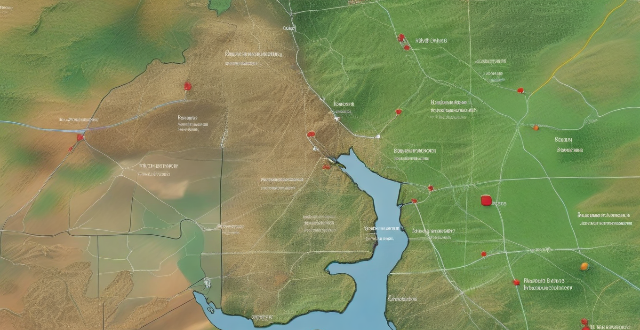
How do climate model predictions help in mitigating climate change ?
Climate models help mitigate climate change by identifying risks, developing adaptation strategies, formulating mitigation policies, facilitating international cooperation, and raising public awareness. They provide essential information for decision-makers to plan resilient infrastructure, adjust agricultural practices, implement water management strategies, set energy efficiency standards, establish renewable energy targets, and encourage low-carbon lifestyles.